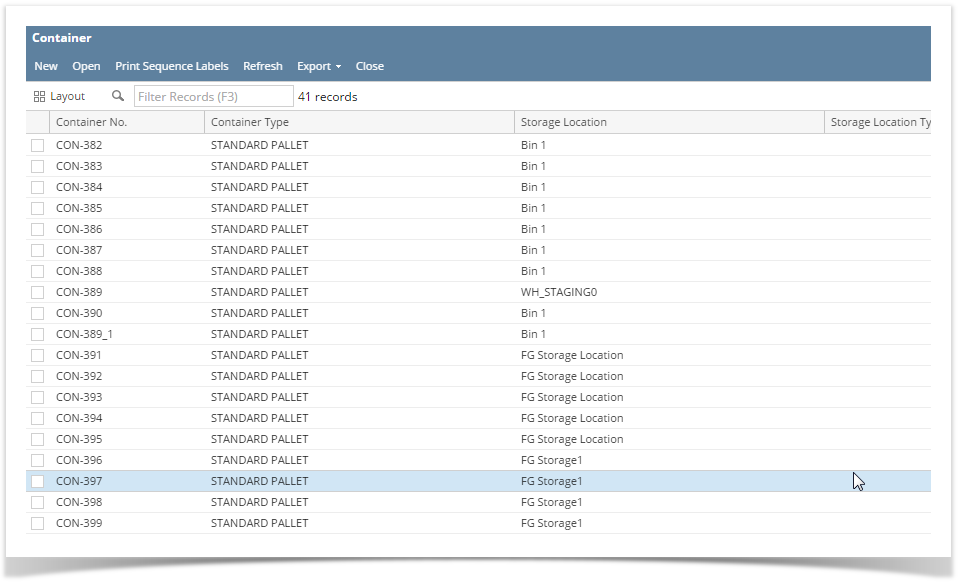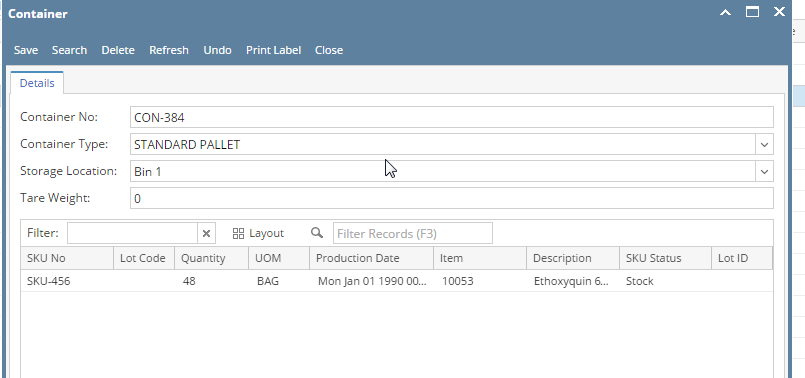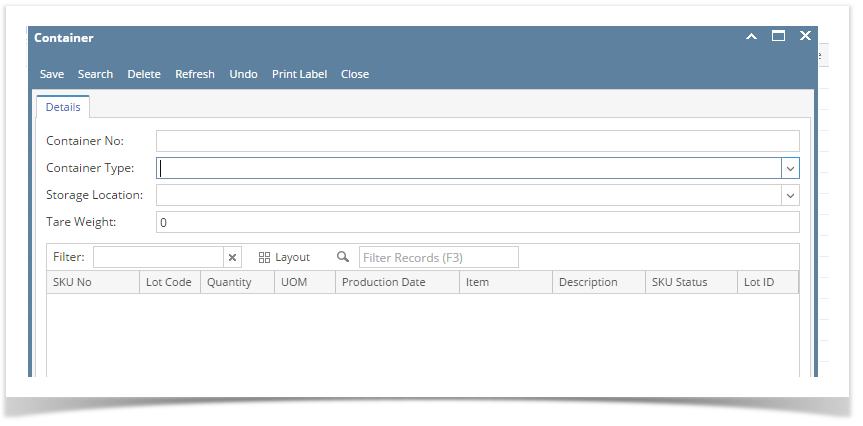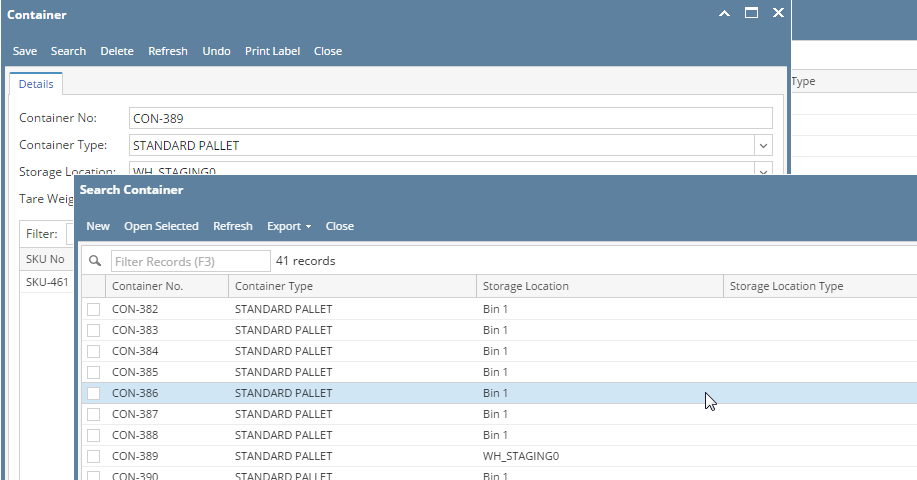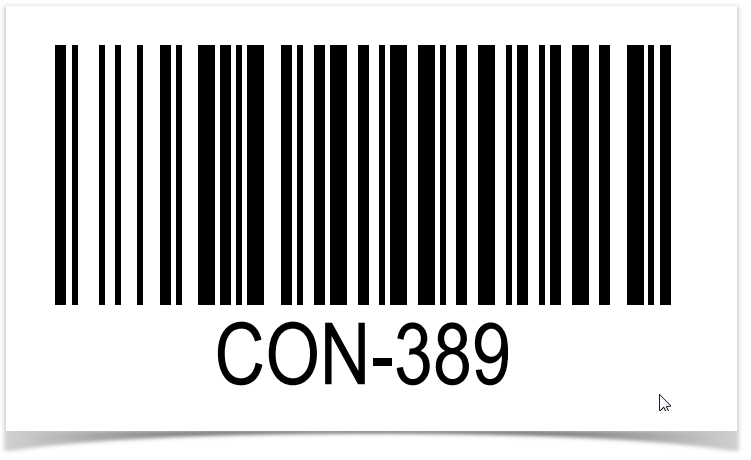Containers are used for storing and/or moving materials in a Warehouse. E.g.: Pallets, Drums, Boxes, etc. A Container holds a Stock Keeping Unit (SKU).
Accessing Container
1.Select ‘Warehouse’–> Container.
This opens the Container manager screen as shown below:
Figure: Container Manager
2. Select any Container and Click on Open
Or
3. Double click on any Container
4. Container Details screen will appear
Figure- Container Details
NOTE:
- An SKU is never placed directly in a Location. It is always placed in a Container of some type.
- In an ideal situation, a Container would contain only one SKU. However, there is no restriction against a container holding multiple SKUs, even if the SKUs represent different products or different lots.
- Container can be moved from one location to other location irrespective of the status of container in Outbound order i.e., even if the container is associated with pick task.
The tool bar of the Container Manager Screen has the following menus:
Menu | Description |
New | Allows the user to create a new Container |
Open | Allows the user to view details of the selected Container |
Print Sequence Labels | Prints a sequential group of container labels, which are usually used during check-in or splitting SKUs |
Refresh | Allows the user to Refresh the page |
| Export | Allows user to export the page to Excel, PDF or TEXT files |
| Close | Allows to Close the screen |
Create a New Container:
Click on 'New' menu
The ‘Container Detail’ screen will load where user can fill all the details and save it to create a new Container.
The fields under the ‘Container’ tab are listed below:
| Field | Description |
| Container ID | Container ID is auto-generated by the application while creating a new container |
| Container Type | Select the type of Container |
| Storage Location | Select the desired active warehouse Storage Location |
| Tare Weight | Enter the Tare Weight of the Container |
SKU Detail Grid:
This grid in the SKU Details sections displays details of all the SKUs existing in the currently selected container
‘SKU’ detail grid will display the following columns:
| Column | Description |
| SKU No | The SKU ID associated with the Container will be displayed |
| Lot Code | The Lot Code of the SKU will be displayed |
| Quantity | Quantity of the SKU will be displayed |
| UOM | UOM of the Quantity will be displayed |
| Production Date | The Production date based on the Lot Code will be displayed |
| Item | The Item Id associated with the SKU will be dipsplayed |
| Description | The Description of the Item will be dipsplayed |
| SKU Status | The Status will be displayed |
| Lot Id | The Lot Id associated with the SKU will be displayed |
Important
Deleting a Container associated with an SKU will delete all the SKUs and tasks associated with it.
Container Detail:
The Container detail screen has the following menus:
i) Save - To save the changes
ii) Search - A New screen will open to search a container from the list ( see below screen shot)
iii) Delete - For deleting a Container
iv) Refresh - To reload the data of Container details screen
v) Print Label - To print/reprint the Container Label ( see below a sample of Container label)
vi) Close - To Close the Container screen
